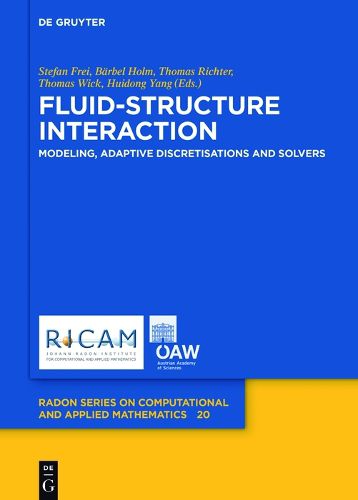Readings Newsletter
Become a Readings Member to make your shopping experience even easier.
Sign in or sign up for free!
You’re not far away from qualifying for FREE standard shipping within Australia
You’ve qualified for FREE standard shipping within Australia
The cart is loading…






This title is printed to order. This book may have been self-published. If so, we cannot guarantee the quality of the content. In the main most books will have gone through the editing process however some may not. We therefore suggest that you be aware of this before ordering this book. If in doubt check either the author or publisher’s details as we are unable to accept any returns unless they are faulty. Please contact us if you have any questions.
This monograph discusses modeling, adaptive discretisation techniques and the numerical solution of fluid structure interaction. An emphasis in part I lies on innovative discretisation and advanced interface resolution techniques. The second part covers the efficient and robust numerical solution of fluid-structure interaction.
In part III, recent advances in the application fields vascular flows, binary-fluid-solid interaction, and coupling to fractures in the solid part are presented. Moreover each chapter provides a comprehensive overview in the respective topics including many references to concurring state-of-the art work.
Contents Part I: Modeling and discretization On the implementation and benchmarking of an extended ALE method for FSI problems The locally adapted parametric finite element method for interface problems on triangular meshes An accurate Eulerian approach for fluid-structure interactions
Part II: Solvers Numerical methods for unsteady thermal fluid structure interaction Recent development of robust monolithic fluid-structure interaction solvers A monolithic FSI solver applied to the FSI 1,2,3 benchmarks
Part III: Applications Fluid-structure interaction for vascular flows: From supercomputers to laptops Binary-fluid-solid interaction based on the Navier-Stokes-Cahn-Hilliard Equations Coupling fluid-structure interaction with phase-field fracture: Algorithmic details
$9.00 standard shipping within Australia
FREE standard shipping within Australia for orders over $100.00
Express & International shipping calculated at checkout
This title is printed to order. This book may have been self-published. If so, we cannot guarantee the quality of the content. In the main most books will have gone through the editing process however some may not. We therefore suggest that you be aware of this before ordering this book. If in doubt check either the author or publisher’s details as we are unable to accept any returns unless they are faulty. Please contact us if you have any questions.
This monograph discusses modeling, adaptive discretisation techniques and the numerical solution of fluid structure interaction. An emphasis in part I lies on innovative discretisation and advanced interface resolution techniques. The second part covers the efficient and robust numerical solution of fluid-structure interaction.
In part III, recent advances in the application fields vascular flows, binary-fluid-solid interaction, and coupling to fractures in the solid part are presented. Moreover each chapter provides a comprehensive overview in the respective topics including many references to concurring state-of-the art work.
Contents Part I: Modeling and discretization On the implementation and benchmarking of an extended ALE method for FSI problems The locally adapted parametric finite element method for interface problems on triangular meshes An accurate Eulerian approach for fluid-structure interactions
Part II: Solvers Numerical methods for unsteady thermal fluid structure interaction Recent development of robust monolithic fluid-structure interaction solvers A monolithic FSI solver applied to the FSI 1,2,3 benchmarks
Part III: Applications Fluid-structure interaction for vascular flows: From supercomputers to laptops Binary-fluid-solid interaction based on the Navier-Stokes-Cahn-Hilliard Equations Coupling fluid-structure interaction with phase-field fracture: Algorithmic details